The main attributes of an image based cover, is one or few people looking at the camera, and most of the time they are smiling. It's the most common type of magazine cover. Illustration based covers are used to show something funny or weird, not many magazines use illustration based magazine covers. Type based covers are also rare, they are usually shocking and surprising. The numbers have a lot of power and force, so it is most likely a serious subject. The last type of cover is concept based, it can be a mix of all three of the covers. It is used to show a strong a strong message in a shocking, serious, or funny way.
Words can provide a lot of information and go into detail about the subject. Photos can show the feeling, experience, and make the magazine a lot more emotional depending on the picture. It can also make it more funny or serious or shocking. This is important because it gives people the information they need, but also better entertainment, and more feeling.
Wednesday, November 29, 2017
My favorite Cover
Winner
Sports Illustrated, April 22, BOSTON
Photographer: John Tlumacki
"At approximately 3:10 on the afternoon of April 15, 2013, the editors of Sports Illustrated returned from their Monday meeting to rumors of a terrorist act near the finish line of the Boston Marathon. With fewer than four hours until Si's weekly deadline, producing a definitive news account of what happened was impossible. Was there, however, an image that captured the afternoon's chaos, its tragedy, in addition to a city's capacity for resilience and goodness in the face of such terror? Yes, there was, dozens of images, in fact. By 4:30 p.m., half an hour ahead of the magazine's usual cover deadline.
"At approximately 3:10 on the afternoon of April 15, 2013, the editors of Sports Illustrated returned from their Monday meeting to rumors of a terrorist act near the finish line of the Boston Marathon. With fewer than four hours until Si's weekly deadline, producing a definitive news account of what happened was impossible. Was there, however, an image that captured the afternoon's chaos, its tragedy, in addition to a city's capacity for resilience and goodness in the face of such terror? Yes, there was, dozens of images, in fact. By 4:30 p.m., half an hour ahead of the magazine's usual cover deadline.
This is a really interesting and creative cover about the Boston Marathon. The way they used police men running to try and find any hurt people like the man on the ground. This cover always shows balance, one of the composition rules. This magazine cover is not a formal portrait or an informal portrait. I would say that it is an environmental portrait, just because the police men are in their normal environment when it comes to disasters or terrorist attacks. I can see why this one won though, because this cover about the Boston Marathon is very touching and emotional, which is an important factor when making covers.
Best Magazine covers 2013
1. Informal
2. Formal
3. Informal
4. Environmental
5. Environmental
6. Formal
7. Informal
8. Formal
9. Formal
10. Formal
11. Formal
12. Formal
13. Informal
14. Formal
15. Formal
16. Environmental
17. Informal
2. Formal
3. Informal
4. Environmental
5. Environmental
6. Formal
7. Informal
8. Formal
9. Formal
10. Formal
11. Formal
12. Formal
13. Informal
14. Formal
15. Formal
16. Environmental
17. Informal
Magazine Tips
1. Make it emotionally irresistible.
2. Make it interesting, make it catch peoples eyes.
3. Efficient, fast, easy to make/scan.
4. Make it worth the money and time.
5. Arouse curiosity, make people want to stop and look.
2. Make it interesting, make it catch peoples eyes.
3. Efficient, fast, easy to make/scan.
4. Make it worth the money and time.
5. Arouse curiosity, make people want to stop and look.
Monday, November 27, 2017
Top 100 Photos
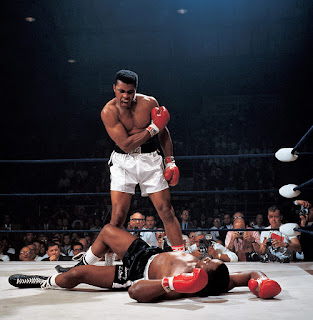 I picked this image because i really like boxing, so this caught my eye right away.
I picked this image because i really like boxing, so this caught my eye right away.2. This photo talks about how being in the right place at the right time is very important in photography. Neil Leifer, the photographer was in the perfect spot, and took the photo at the perfect time.
3. In addition to the actual photo, I learned that this very famous photo ended up being the best sports picture of the century.
4.

5. Neil Leifer, December 28, 1942 (age 74) New York city, NY. He went to the Henry Street Settlement House where he learned photography for free.
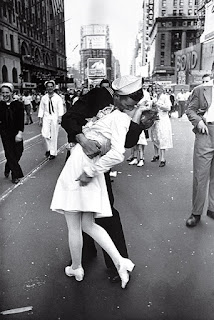 I like this photo because it reminds of good times, it really catches my eye because it is a famous picture.
I like this photo because it reminds of good times, it really catches my eye because it is a famous picture.2. This photo is one of the most famous photos of the 20th century. The photographer was searching for something to capture the joy, hope, and wonder of life.
3. In addition to the actual photo, I learned that the sailor grabbed a random nurse and kissed her, I always thought they were a couple.
4.
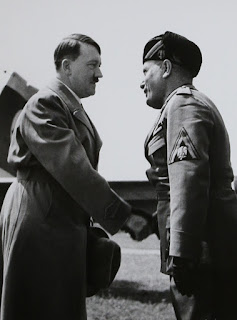
5. Alfred Eisenstaedt, born December 6, 1898. Died August 23, 1995. Born in West Prussia. He didn't go to college because he was in World War 1, but he took pictures for the Pacific and Atlantic Photos Berlin as a young photographer.
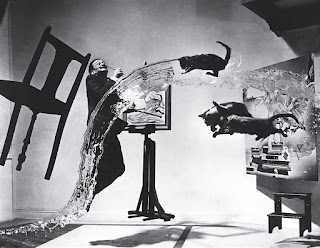 I chose this photo because it grabbed my attention, it is a very weird picture.
I chose this photo because it grabbed my attention, it is a very weird picture.2. The photographer wanted to take a picture of his friend, but he knew a simple portrait would not be good enough. He decided to make it spontanious and unique, he had cats in the air, a floating chair, water, and Dali jumping up.
3. Besides the actual photo, I learned that this took 26 takes, to get the cats and the water and the chair all synced up.
4.
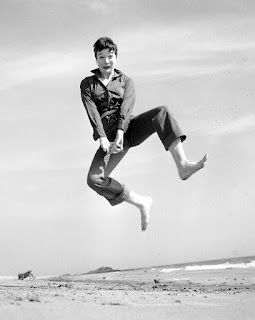
5. Philippe Halsman, born May 2, 1906. Died June 25 1979. Born in Riga, Latvia. He attended Technische Hochschule in Dresden, Germany.
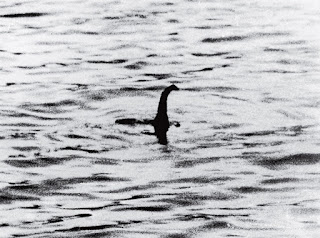 I chose this photo because it is a very famous photo of what people think could be the Loch Ness monster.
I chose this photo because it is a very famous photo of what people think could be the Loch Ness monster.2. This is a photo of a toy submarine, the monster was fake and invented by Dr. Robert Wilson. The only reason for the "monsters" creation is because of boredom.
3. Additional information about the photo, is that a hunter named Marmaduke Wetherell provided fake pictures of a hippo print to prove the monster existed.
4. The photographer is unknown.
5. The photographer is unknown because when Marmaduke went to capture the beast he had somone else take the photo but it doesn't say who it was.
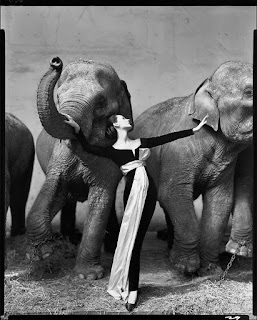 I chose this photo because it shows how majestic elephants are, and how she is calm with them.
I chose this photo because it shows how majestic elephants are, and how she is calm with them.2. This photo was taken at a paris circus in 1955, she was one of the world's most famous models. By moving models into exciting backgrounds, the photographer showed real art instead of fashion and commercial.
3. Additional information is that this model, Dovima, was one of the last models that unattainable beauty, unlike todays generation of the-girl-next-door type of look.
4.
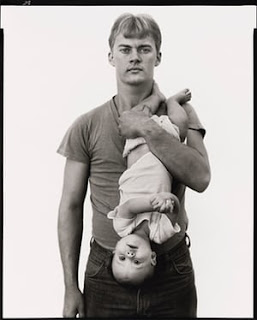
5. Richard Avedon, born May 15 1923, died October 1, 2004. Born in New York City, NY. He went to Columbia University.
Wednesday, November 15, 2017
Photoshop Changes
First Video:
1. They made the neck skinnier.
2. They lowered her eyes.
3. They filled a gap in her hair.
4. They made her eyes bigger.
5. They changed her lips.
6. They made her neck longer.
7. They made her forehead look skinnier.
Second Video:
1. They made her eyes bigger.
2. They made her nose smaller.
3. They made her skin color lighter.
4. They made her legs longer.
5. They made her shoulders bigger.
6. They made her but smaller.
7. They made her belly smaller.
8. They painted her lips red.
Third Video:
1. They made her skinnier.
2. They changed the skin color.
3. They changed her face.
4. They changed her hair.
5. They changed her bikini.
6. They changed the shape of the pizza.
7. They put a pizza into a model.
Conclusion Questions:
1. No it's not, because you're making them into something their not and you are probably making them feel like their not good enough since you're having to change them so much.
2. When somebody starts working out, and they do a before and after, that is not okay to be photoshopping what you looked like before.
3. The changes that are OK when photoshopping include levels, cropping, and changing exposure.
4. In photojournalism you record history in a way, and in fashion photography you try to get people to buy your item by making people way more attractive than they really are, and saying they got this way because of your product.
5. There are two main types of photography in my opinion, recording history like nature, weddings, family, and the other is just using basically fake photos for advertising.
6. I think you showed us these videos so we can know how powerful photoshop can be.
7. I think none of these videos are about guys because guys can't be changed as much as girls.
1. They made the neck skinnier.
2. They lowered her eyes.
3. They filled a gap in her hair.
4. They made her eyes bigger.
5. They changed her lips.
6. They made her neck longer.
7. They made her forehead look skinnier.
Second Video:
1. They made her eyes bigger.
2. They made her nose smaller.
3. They made her skin color lighter.
4. They made her legs longer.
5. They made her shoulders bigger.
6. They made her but smaller.
7. They made her belly smaller.
8. They painted her lips red.
Third Video:
1. They made her skinnier.
2. They changed the skin color.
3. They changed her face.
4. They changed her hair.
5. They changed her bikini.
6. They changed the shape of the pizza.
7. They put a pizza into a model.
Conclusion Questions:
1. No it's not, because you're making them into something their not and you are probably making them feel like their not good enough since you're having to change them so much.
2. When somebody starts working out, and they do a before and after, that is not okay to be photoshopping what you looked like before.
3. The changes that are OK when photoshopping include levels, cropping, and changing exposure.
4. In photojournalism you record history in a way, and in fashion photography you try to get people to buy your item by making people way more attractive than they really are, and saying they got this way because of your product.
5. There are two main types of photography in my opinion, recording history like nature, weddings, family, and the other is just using basically fake photos for advertising.
6. I think you showed us these videos so we can know how powerful photoshop can be.
7. I think none of these videos are about guys because guys can't be changed as much as girls.
Monday, November 13, 2017
Planning for the Portrait Assignment
My plan is to take a portrait of my pitbull, and for my other picture I'm planning on taking a picture of my little brother. I do not think I'm going to do an environmental portrait of my little brother, but I plan on taking a picture of my dog in the grass, because he loves to be outside. For my little brother, I will most likely take a casual portrait. For my self portrait I plan on doing an environmental portrait, for my first photo I want to take a picture while juggling a soccer ball, and I will have the ball up in the air, while not looking at the camera. For my second photo, it will just be a picture of me.
Casual Portraits
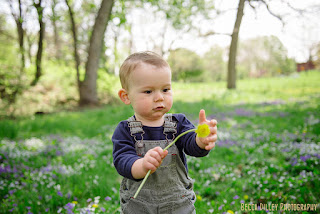 I like this photo because the baby looks like he is very interested in what he's holding, just like babies are interested in everything. I chose this photo because it is a good example of a casual photo.
I like this photo because the baby looks like he is very interested in what he's holding, just like babies are interested in everything. I chose this photo because it is a good example of a casual photo. This photo is an example of a casual photo because the man in the picture looks like someone just asked if they could get a picture of him, and so he just smiled.
This photo is an example of a casual photo because the man in the picture looks like someone just asked if they could get a picture of him, and so he just smiled.
Photography Self Portrait
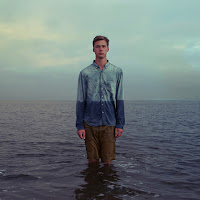 I like this photo because it really displays how he is feeling, you can tell he feels alone. I chose this photo because it is a good example of a self portrait.
I like this photo because it really displays how he is feeling, you can tell he feels alone. I chose this photo because it is a good example of a self portrait.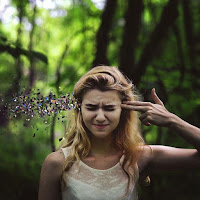 I like this photo because I can tell how she's feeling, she is going through something where she feel like blowing her brains out. I chose this picture because it's a great example of a self portrait.
I like this photo because I can tell how she's feeling, she is going through something where she feel like blowing her brains out. I chose this picture because it's a great example of a self portrait.
Environmental Portraits
Tips on taking Portraits
2. Play with Eye Contact
7. Introduce a Prop
20. Find an Interesting Subject
Subscribe to:
Comments (Atom)


